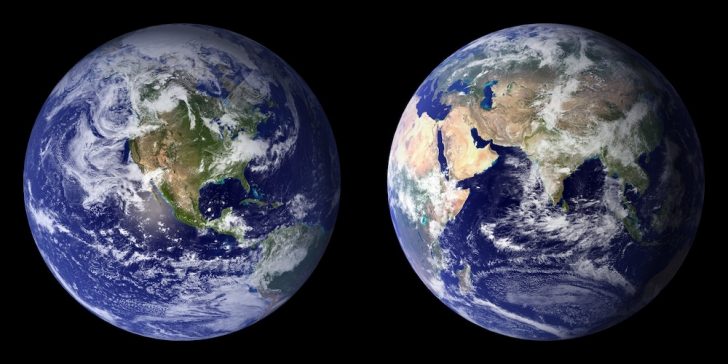Have you ever thought about why the Earth is round? It might seem like an obvious fact, but the story behind our planet’s shape is a fascinating journey through the realms of astronomy and science. So, let’s embark on this cosmic adventure to discover why Earth is not just round but also slightly imperfect.
A Revolutionary Idea
If you step outside and look around, does it feel like you’re standing on a giant, spherical ball hurtling through space around the Sun? Probably not. In fact, for centuries, many people believed Earth was flat and that the Sun revolved around it.
It might sound absurd now, but these ideas were once the norm. However, the evolution of scientific knowledge has taught us that our senses can often deceive us in astronomy.

Mass and Gravity: The Dynamic Duo
To understand why Earth is round, we must consider two crucial factors: mass and gravity. These elements are closely intertwined because mass attracts other mass, creating the force we call gravity.
While smaller objects like cars and houses have weak gravitational forces, Earth’s vast mass creates a substantial pull. Scientists theorize that about 4.6 billion years ago, the solar system was a swirling cloud of dust and gas.
As gravity drew matter together, it began clumping and spinning, eventually forming the sun, planets, moons, and celestial objects. Earth’s rocky core was the first to take shape, with dense matter sinking to the center and bonding, followed by lighter materials forming the planet’s crust.
As Earth’s mass increased and gravitational forces strengthened, it naturally adopted the most efficient shape: a sphere. If Earth were a cube, its corners would be farther from the center than other points, requiring gravity to pull them closer.

The result is a shape where every point on the surface is equidistant from the center, and that’s a sphere! Therefore, gravity is the key to Earth’s roundness.
From Irregular Rocks to Spherical Planets
Astronomy enthusiasts may have noticed that some asteroids appear as irregular, rocky shapes in space. These celestial bodies aren’t large enough to pull themselves into a sphere. However, even asteroids will transform into spherical shapes given time and sufficient mass accumulation. Astronomers use this ability to form spheres as one of the criteria for classifying celestial objects as planets!
Earth’s Not-So-Perfect Roundness
While Earth might appear perfectly round in photos taken from space, it’s not quite so in reality. The planet’s shape is more like that of an ellipsoid. Earth’s constant rotation generates centrifugal forces that make it wider at the equator than at the poles, by approximately 70,000 feet.
Additionally, Earth’s surface is far from flat, featuring towering mountain ranges and deep ocean trenches contributing to its slightly irregular shape.

Ever-Changing Earth
Earth’s shape is anything but static; it’s in constant flux. Some changes follow predictable patterns, such as daily tidal fluctuations, while others are gradual and irregular, like the movement of tectonic plates. Sudden, dramatic shifts can also occur due to natural disasters like earthquakes, volcanic eruptions, and meteor impacts.
The Science of Earth’s Shape
Keeping track of Earth’s size and shape is a specialized field of science known as geodesy. Scientists, particularly those at the National Geodetic Survey, meticulously monitor these changes. Their work ensures we have accurate measurements of our ever-changing, not-so-perfectly-round home.




